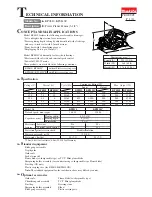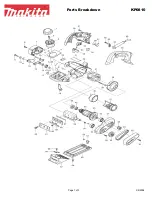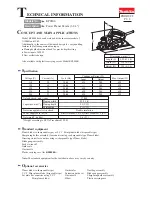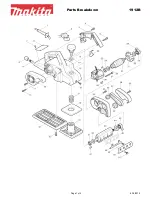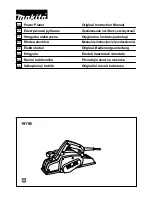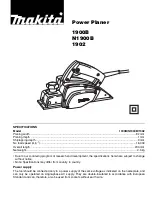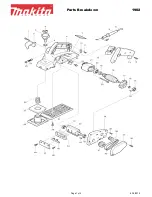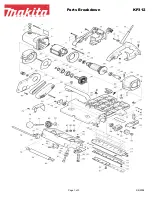
46
1
FEATURES
APPLICATIONS
Xin/CLK
1
14
Xout
S0
2
13
S1/SDA
V
DD 3
12
S2/SCL
V
ctr 4
11
Y1
GND
5
10
GND
V
DDOUT 6
9
Y2
7
8
Y3
VCXO
XO
LVCMOS
LV
CMOS
LV
CMOS
PLL
with�SSC
LV
CMOS
Divider
and
Output
Control
3
EEPROM
Programming
and
Control�Register
V
ctr
Crystal�or
Clock�Input
S2/S1/S0�or
SDA/SCL
V
DD
GND
V
DDOUT
Y1
Y2
Y3
V
DDOUT
CDCE913
CDCEL913
SCAS849B–JUNE 2007–REVISED DECEMBER 2007
www.ti.com
Programmable 1-PLL VCXO Clock Synthesizer With 1.8-V, 2.5-V, and 3.3-V Outputs
•
Flexible Clock Driver
2345
•
Member of Programmable Clock Generator
– Three User-Definable Control Inputs
Family
[S0/S1/S2], for example., SSC Selection,
Frequency Switching, Output Enable, or
–
CDCE913/CDCEL913: 1-PLL, 3 Outputs
Power Down
– CDCE925/CDCEL925: 2-PLL, 5 Outputs
– Generates Highly Accurate Clocks for
– CDCE937/CDCEL937: 3-PLL, 7 Outputs
Video, Audio, USB, IEEE1394, RFID,
– CDCE949/CDCEL949: 4-PLL, 9 Outputs
Bluetooth™, WLAN, Ethernet™, and GPS
•
In-System Programmability and EEPROM
– Generates Common Clock Frequencies
– Serial Programmable Volatile Register
Used With TI-DaVinci™, OMAP™, DSPs
– Nonvolatile EEPROM to Store Customer
– Programmable SSC Modulation
Setting
– Enables 0-PPM Clock Generation
•
Flexible Input Clocking Concept
•
1.8-V Device Power Supply
– External Crystal: 8 MHz to 32 MHz
•
Wide Temperature Range –40
°
C to 85
°
C
– On-Chip VCXO: Pull Range ±150 ppm
•
Packaged in TSSOP
– Single-Ended LVCMOS up to 160 MHz
•
Development and Programming Kit for Easy
•
Free Selectable Output Frequency up to
PLL Design and Programming (TI Pro-Clock™)
230 MHz
•
Low-Noise PLL Core
•
D-TV, STB, IP-STB, DVD-Player, DVD-Recorder,
– PLL Loop Filter Components Integrated
Printer
– Low Period Jitter (Typical 50 ps)
•
Separate Output Supply Pins
– CDCE913: 3.3 V and 2.5 V
– CDCEL913: 1.8 V
1
Please be aware that an important notice concerning availability, standard warranty, and use in critical applications of
Texas Instruments semiconductor products and disclaimers thereto appears at the end of this data sheet.
2
DaVinci, OMAP, Pro-Clock are trademarks of Texas Instruments.
3
Bluetooth is a trademark of Bluetooth SIG.
4
I2C is a trademark of Philips Electronics.
5
Ethernet is a trademark of Xerox Corporattion.
PRODUCTION DATA information is current as of publication date.
Copyright © 2007, Texas Instruments Incorporated
Products conform to specifications per the terms of the Texas
Instruments standard warranty. Production processing does not
necessarily include testing of all parameters.
www.ti.com
DESCRIPTION
CDCE913
CDCEL913
SCAS849B–JUNE 2007–REVISED DECEMBER 2007
These devices have limited built-in ESD protection. The leads should be shorted together or the device placed in conductive foam
during storage or handling to prevent electrostatic damage to the MOS gates.
The CDCE913 and CDCEL913 are modular PLL-based low-cost, high-performance, programmable clock
synthesizers, multipliers, and dividers. They generate up to 3 output clocks from a single input frequency. Each
output can be programmed in-system for any clock frequency up to 230 MHz, using the integrated configurable
PLL.
The CDCx913 has separate output supply pins, V
DDOUT
, which is 1.8 V for CDCEL913 and 2.5 V to 3.3 V for
CDCE913.
The input accepts an external crystal or LVCMOS clock signal. If an external crystal is used, an on-chip load
capacitor is adequate for most applications. The value of the load capacitor is programmable from 0 to 20 pF.
Additionally, an on-chip VCXO is selectable which allows synchronization of the output frequency to an external
control signal, that is, PWM signal.
The deep M/N divider ratio allows the generation of zero-ppm audio/video, networking (WLAN, BlueTooth,
Ethernet, GPS) or interface (USB, IEEE1394, Memory Stick) clocks from e.g., a 27 MHz reference input
frequency.
The PLL supports SSC (spread-spectrum clocking). SSC can be center-spread or down-spread clocking which is
a common technique to reduce electro-magnetic interference (EMI).
Based on the PLL frequency and the divider settings, the internal loop filter components are automatically
adjusted to achieve high stability and optimized jitter transfer characteristic.
The device supports non-volatile EEPROM programming for ease customization of the device to the application.
It is preset to a factory default configuration (see the
DEFAULT DEVICE CONFIGURATION
section). It can be
re-programmed to a different application configuration before PCB assembly, or re-programmed by in-system
programming. All device settings are programmable through SDA/SCL bus, a 2-wire serial interface.
Three programmable control inputs, S0, S1 and S2, can be used to select different frequencies, or change SSC
setting for lowering EMI, or other control features like, outputs disable to low, outputs 3-state, power down, PLL
bypass etc).
The CDCx913 operates in a 1.8 V environment. It operates in a temperature range of –40
°
C to 85
°
C.
Terminal Functions for CDCE913, CDCEL913
TERMINAL
I/O
DESCRIPTION
NAME
PIN TSSOP14
Y1–Y3
11, 9, 8
O
LVCMOS outputs
Xin/CLK
1
I
Crystal oscillator input or LVCMOS clock Input (selectable via SDA/SCL bus)
Xout
14
O
Crystal oscillator output (leave open or pullup when not used)
V
Ctrl
4
I
VCXO control voltage (leave open or pullup when not used)
V
DD
3
Power
1.8-V power supply for the device
CDCEL913
: 1.8-V supply for all outputs
V
DDOUT
6, 7
Power
CDCE913:
3.3-V or 2.5-V supply for all outputs
GND
5, 10
Ground Ground
S0
2
I
User-programmable control input S0; LVCMOS inputs; internal pullup 500k
SDA:
bidirectional serial data input/output (default configuration), LVCMOS internal
SDA/S1
13
I/O or I
pullup; or
S1:
user-programmable control input; LVCMOS inputs; internal pullup 500k
SCL:
serial clock input LVCMOS (default configuration), internal pullup 500k or
SCL/S2
12
I
S2:
user-programmable control input; LVCMOS inputs; internal pullup 500k
2
Submit Documentation Feedback
Copyright © 2007, Texas Instruments Incorporated
Product Folder Link(s):
CDCE913 CDCEL913
IC27 : CDCE913PWR
































